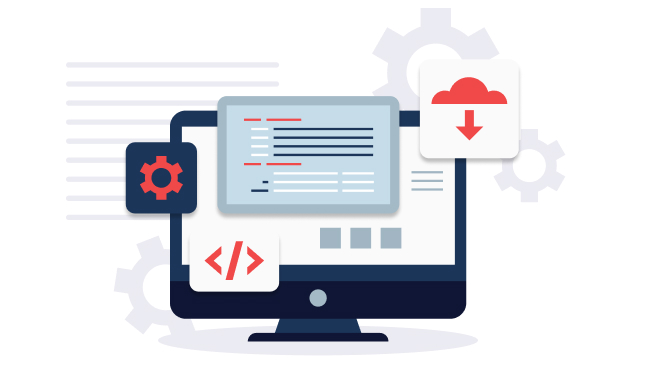Contact person
Elmer de Valk
Chief Executive Officer (CEO)
+31 (0)30 76 02 670


For over 25 years, countless organizations have used SAP systems as an on-prem ERP solution to control their operations. Over that time, a lot of custom-coded, business-specific workflows were added to those systems that aren’t inherent to SAP’s core.
Now that those same organizations are gradually starting to upgrade to SAP S/4HANA, they’re running into a complicated and cost-heavy problem: migrating those custom workflows to their new instance.
In this article, we’ll explore how organizations can facilitate their transition to SAP S/4HANA by migrating their customizations to ServiceNow. This approach has a large number of benefits, ranging from cost savings and the prevention of upgrade issues, to improved competitiveness.
Let’s dig in.
SAP has been a reliable ERP solution for several decades, being used by large enterprises to perform crucial operational processes having to do with finance, planning, resource management, and so on.
In 2015, SAP released S/4HANA software, a successor to on-prem systems like SAP R/3.
Although this cloud-based system was lauded as an exceptional and groundbreaking ERP software, experts from Gartner pointed out that it might bring issues with it having to do with migration, among other things.

Gartner’s observation of possible migration issues was, without a doubt, valid—and the problem lies here:
Over the years, many organizations’ ERP systems have absorbed many customized workflows that aren’t native to them.
Transferring these to a new instance is difficult and very costly.
An SAP upgrade can cost organizations tens or even hundreds of millions of dollars; the transfer of custom workflows, which have aggregated onto a system over decades, is therefore no trivial task, both technically and financially.
In our opinion, ServiceNow is the most effective solution to perform any SAP upgrade in a cost-effective and efficient way.
To explain why, it’s necessary to use terminology from Gartner’s Pace-Layered Application Strategy.
SAP systems are what Gartner calls systems of record: steady, process-driving systems with fixed, out-of-the-box features.
They’re made for business processes that are common to most large organizations, and their purpose is to provide stability, not business agility.
Besides systems of record, Gartner also mentions systems of differentiation and systems of innovation.
These support innovative workflows and are designed to develop and change functionalities in an agile manner to meet rapidly changing, business-specific needs (differentiation).
ServiceNow is one of these systems: it is specifically designed to enable organizations to rapidly create their own, unique workflows.
We suggest that organizations, when upgrading to S/4HANA, transfer their custom workflows to ServiceNow instead.
ServiceNow seamlessly integrates with SAP; as a leading enterprise low-code application platform, it can quickly migrate any customizations.
We will explore the technical aspects of integrating ServiceNow and SAP further on—for now, we’ll briefly touch upon the benefits of using ServiceNow as a system of differentiation.
Our approach starts with proving the value of the SAP-ServiceNow solution by rapidly creating a single app to replace one of your customizations.
This can be integrated with your SAP system directly or via middleware.
To identify the right applications to transfer to S/4HANA, we can use Gekkobrain, a Denmark-based company that was acquired by ServiceNow in 2021 to “streamline ERP migrations [and] modernize systems of record.”
Gekkobrain can scan ERP systems and map which areas are customized, and which of those customizations are still being used.
This enables organizations to separate the wheat from the chaff and discard any obsolete workflows.
Gekkobrain can also create a prototype of what a customization could look like if it existed in ServiceNow.
Those prototypes can then be turned into functioning workflows with appropriate maturity.
Organizational Change management plays a crucial part in our approach to SAP-ServiceNow integrations.
It’s important to guide your IT personnel through such a radical transition to an out-of-the-box ERP and teach them how to work with a low-code platform like ServiceNow.
Lastly, we try to leverage the existing integration abilities of both SAP and ServiceNow.
The latter, for example, offers a number of integration spokes, e.g. for SAP FICO and SAP Solution Manager.
ServiceNow, the ServiceNow logo, Now, Now Platform, and other ServiceNow marks are trademarks and/or registered trademarks of ServiceNow, Inc. in the United States and/or other countries. Other company names, product names, and logos may be trademarks of the respective companies with which they are associated.


Sign up to our monthly Flow@Work Exclusive newsletter to get free access to our expertise and lots of tips and tricks to make work flow on the Now® Platform.